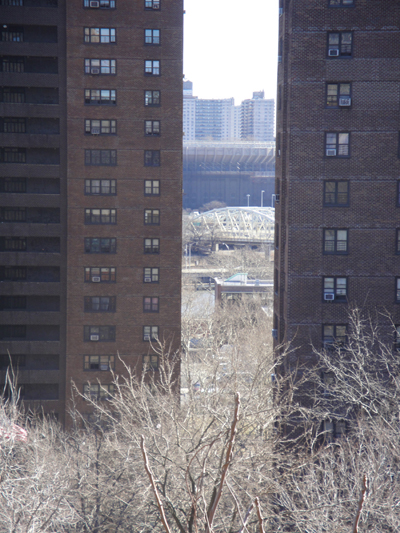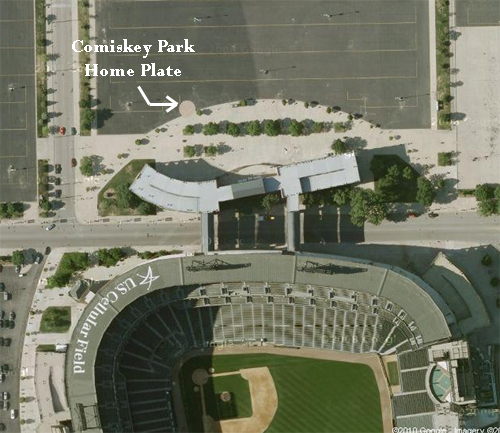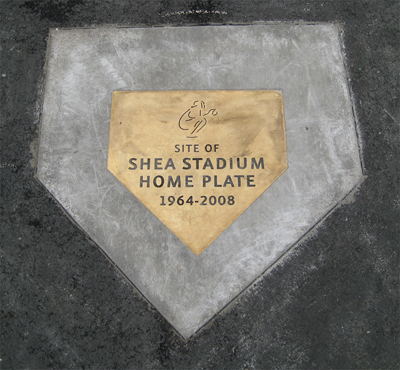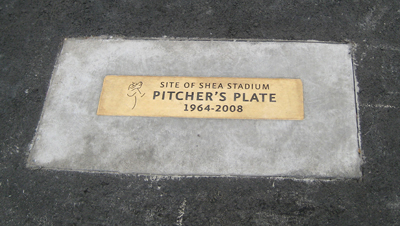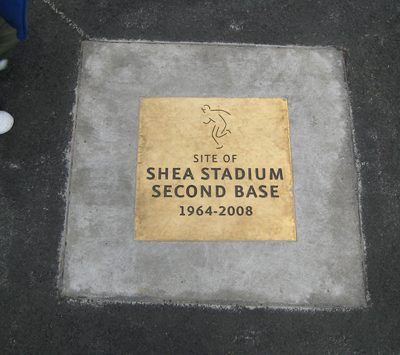
Metropolitan Stadium was home of the Minnesota Twins from their inception in 1961 through the end of the 1981 season. At that point the Twins (and the NFL Vikings) moved to the Metrodome. The stadium was abandoned for a few years before its demolition in 1985. The site of the stadium remained an unmarked vacant lot until 1992 when the massive Mall of America opened.

As I always do when visiting MLB cities, I try to find the remains and/or historic markers of old ballparks. This one was actually quite easy to find as its in the middle of the largest shopping mall in the country. The home plate marker (pictured above) is located inside of an indoor amusement park called "Nickelodeon Universe".

Located 520 feet from the home plate marker is the Log Flume ride. Up on the wall beyond the ride is a seat from the old stadium.

The seat represents the longest home run in the history of the Met. Hit by Harmon Killebrew on June 3, 1957, the home run traveled 520 feet into the far reaches of the stadium's bleachers. There is also a small plaque detailing Killebrew's achievements at the Log Flume.
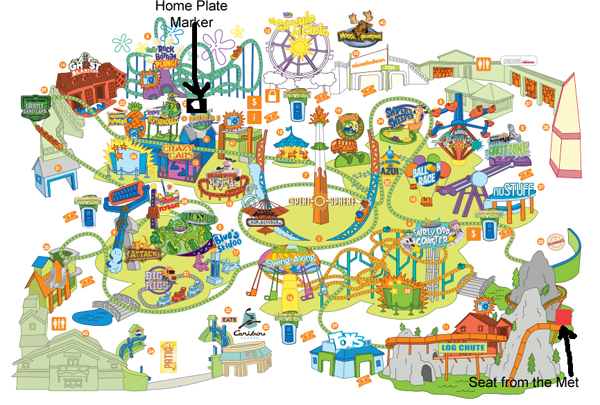
This is probably the easiest stadium marker to visit. It is located just off the main north/south highway only a few miles south of Minneapolis. The theme park does not charge admission to enter and is located in the center of the gigantic shopping mall.
To see other images of the Met markers click HERE.
Check out images of Metropolitan Stadium before demolition at The Stadium Graveyard.





